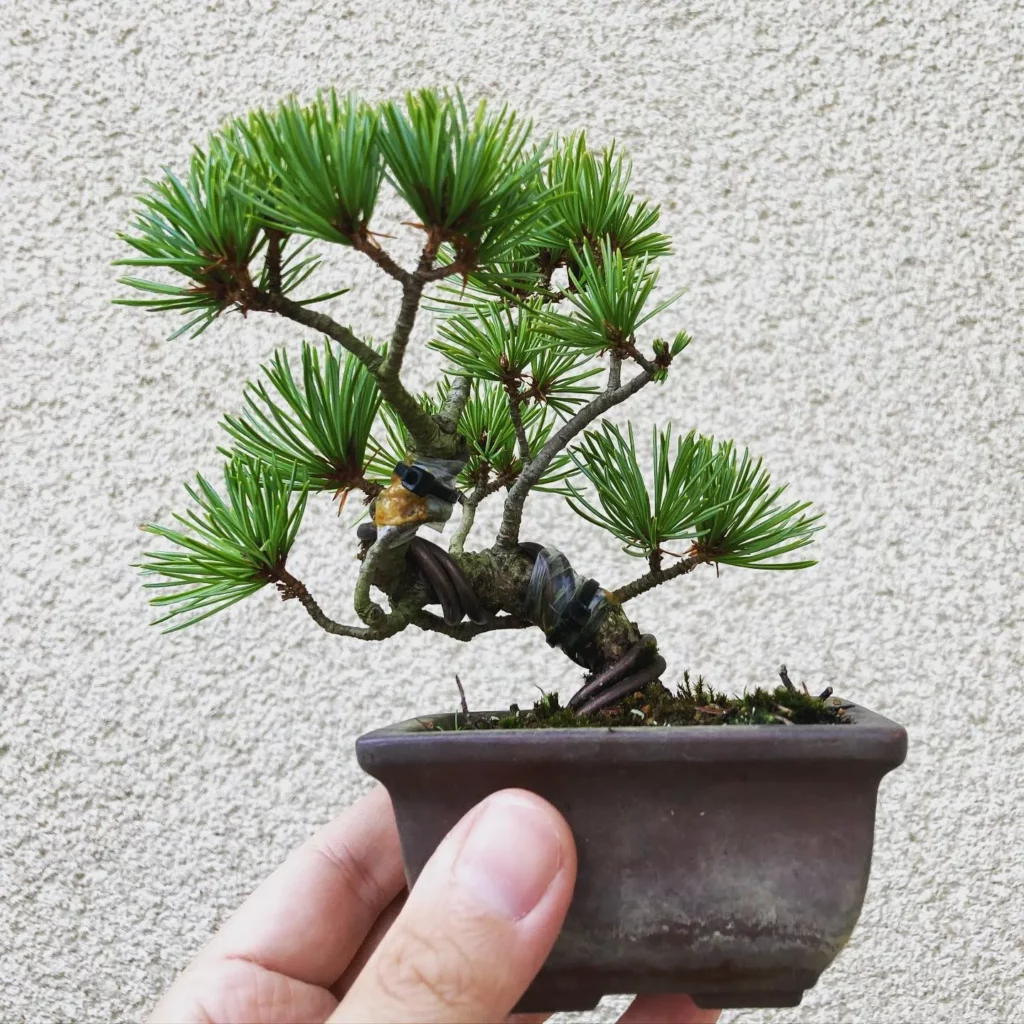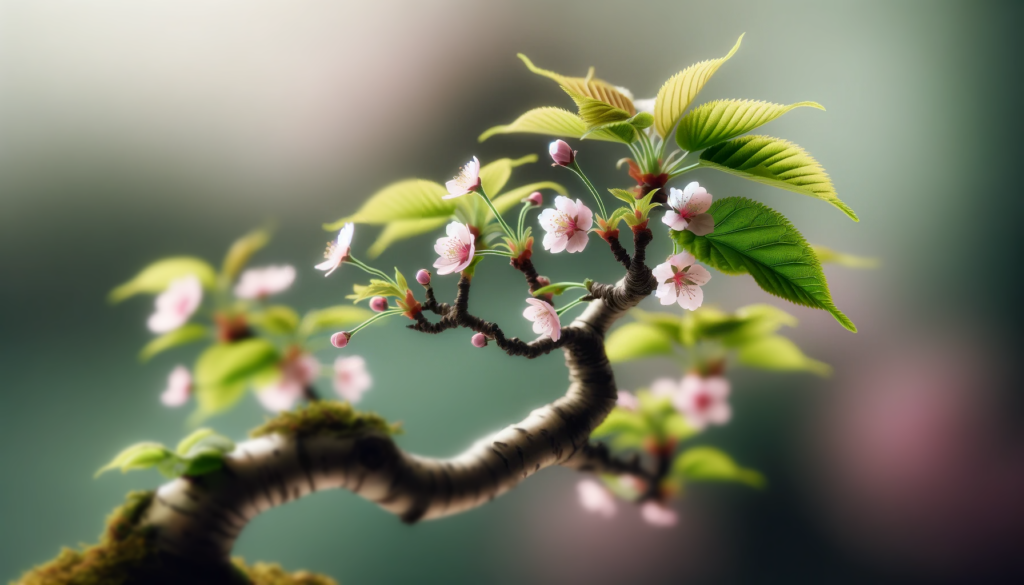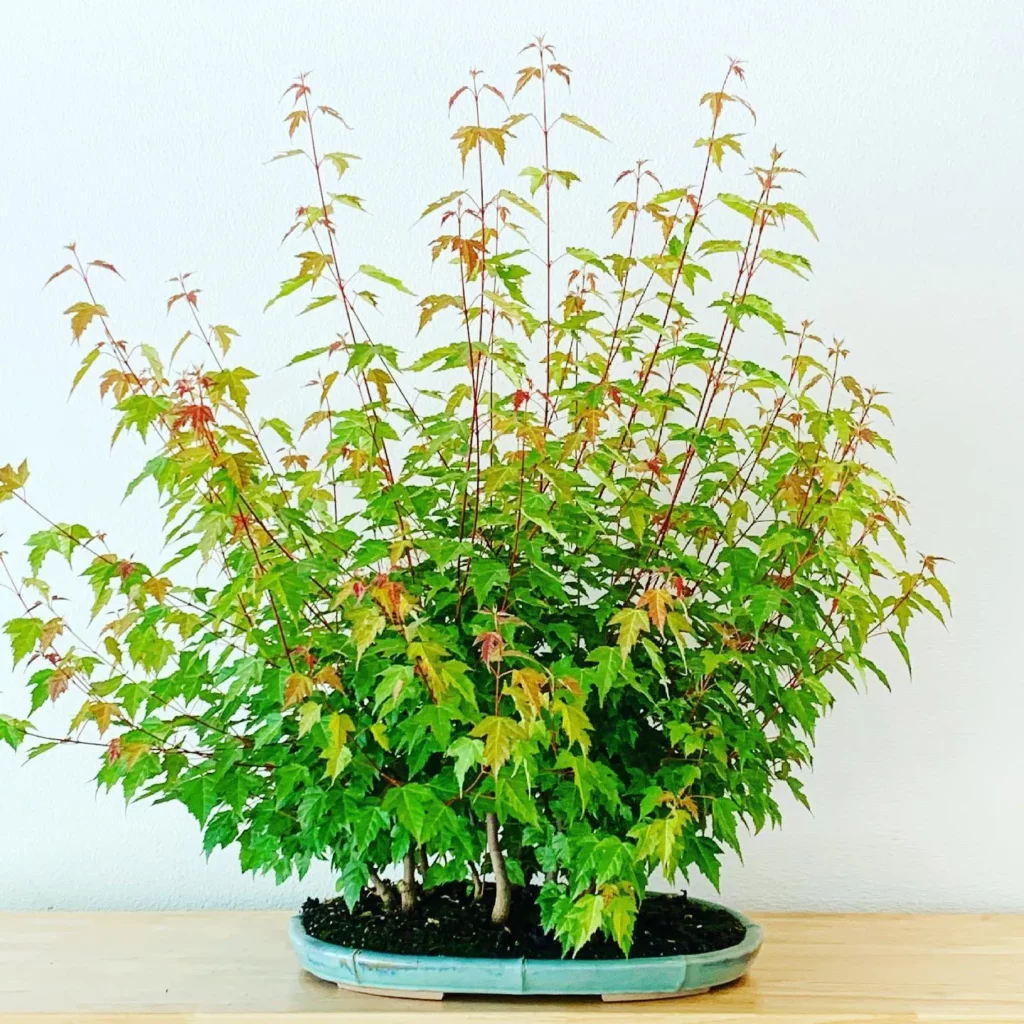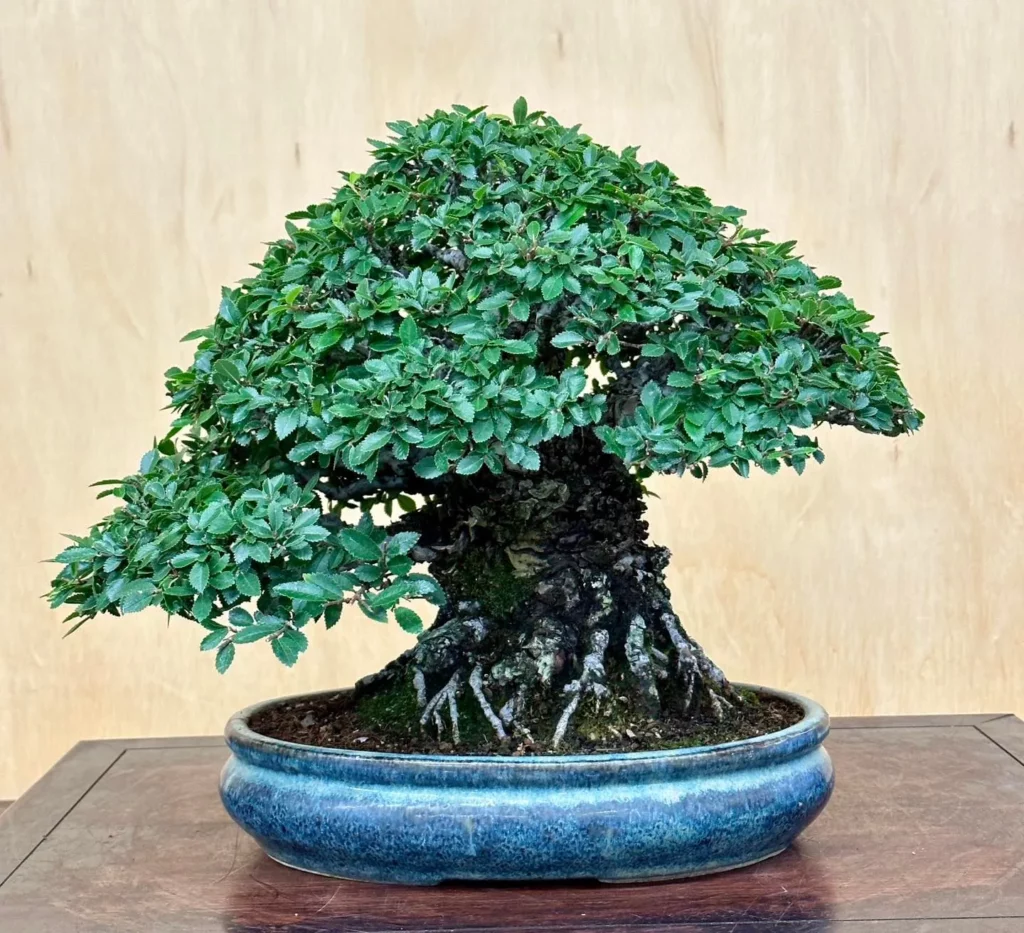Shaping bonsai trees through pruning and wiring is essential for maintaining their form and ensuring healthy growth. This art form requires meticulous care and attention to detail, as each cut and bend contributes to the overall beauty and character of the tree.
Pruning bonsai trees is a fundamental technique that helps control growth and create the desired shape. By selectively removing branches, leaves, and buds, we can direct the tree’s energy and encourage growth in specific areas. Pruning also helps maintain the balance between the roots and foliage, promoting long-term health.
Wiring, on the other hand, allows us to shape and bend branches to achieve the desired design. By wrapping a carefully chosen wire around the branch, we can guide its growth and create elegant curves and angles.
Key Takeaways:
- Pruning and wiring are essential techniques for shaping bonsai trees and promoting healthy growth.
- Timing is crucial when it comes to pruning and wiring. Late winter is recommended for wiring deciduous trees.
- Choose the right wire material and thickness based on the branch you are working with.
- Monitor the tree closely to prevent damage from wires and remove them before they start digging into the bark.
- Other shaping methods include holding the tree in desired shapes and using guy wires to bend branches or trunks.
Understanding Pruning Techniques for Bonsai Trees
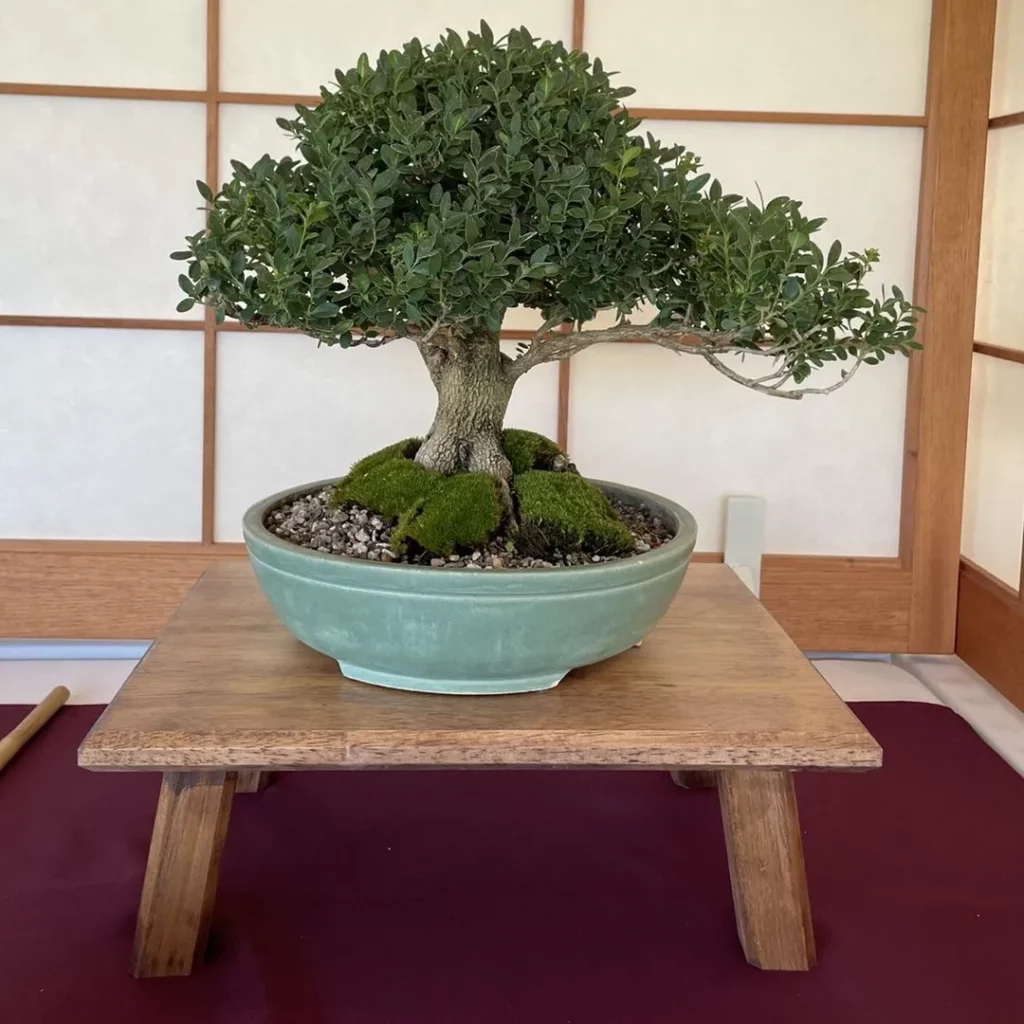


Pruning is a vital technique in shaping and directing the growth of bonsai trees. By selectively removing branches and foliage, you can create the desired shape and style, while promoting overall health and vigor. There are two main types of pruning techniques used for bonsai trees: maintenance-pruning and structural-pruning.
No products found.
Maintenance-pruning is the regular, ongoing pruning that helps to maintain and refine the existing shape of the bonsai tree. It involves removing small shoots, buds, or branches that may be growing in unwanted directions or disrupting the desired form. This type of pruning can be done throughout the year, as needed.
Structural-pruning is a more rigorous form of pruning and is typically done during the tree’s dormant period, usually in late winter. This type of pruning is used to give the bonsai tree its basic shape or style. By removing larger branches and foliage, you can create an open structure that allows light and air to penetrate the tree, promoting healthy growth.
When pruning bonsai trees, it’s important to always aim for a natural and aesthetically pleasing appearance. Start by visualizing the desired shape and carefully consider which branches to remove or shorten. Remember to make clean cuts at a slight angle just above a bud or shoot that is pointing in the desired direction.
Pruning Tips for Bonsai Trees
- Use sharp and clean pruning tools to ensure precise cuts and reduce the risk of introducing diseases to the tree.
- Prune branches gradually over time, rather than all at once, to avoid stressing the tree.
- Regularly inspect the bonsai tree for any dead or diseased branches and remove them promptly to prevent further damage.
- When pruning, always keep in mind the natural growth pattern of the tree and aim to enhance its unique features.
- Consider using pruning sealant after making larger cuts to protect the tree from pests and diseases.
Timing Pruning for Optimal Results
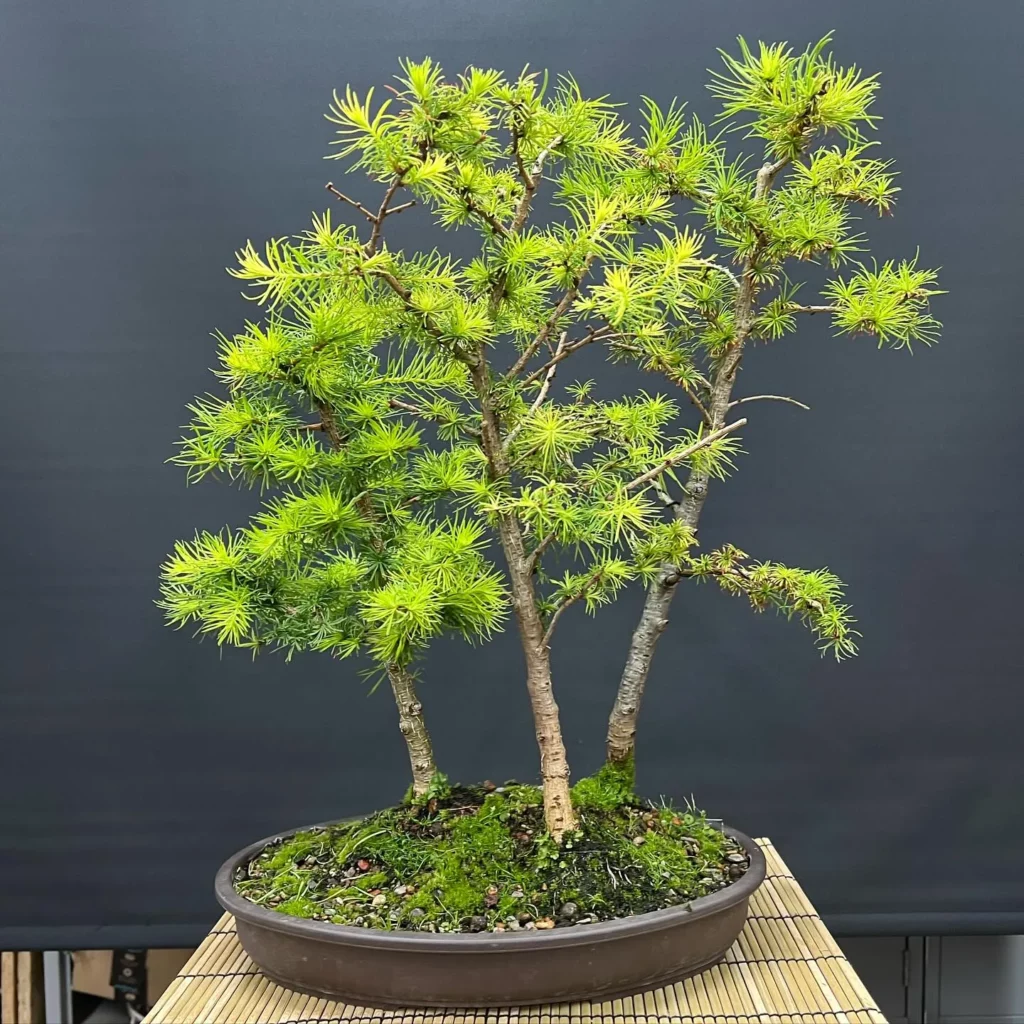
Timing your pruning efforts correctly can significantly impact the health and shape of your bonsai tree. By understanding the best timing for pruning, you can ensure that your tree responds well to the trimming and maintains its desired form.
For different species of bonsai trees, the timing for pruning may vary. As a general rule, late winter is considered the ideal time for pruning deciduous trees. This is because the tree is dormant during this period, and pruning during this time encourages vigorous growth in the coming spring.
When it comes to conifers and pines, pruning is best done in early spring. This timing allows the tree to recover quickly from the pruning cuts and promotes healthy growth. It’s important to note that pruning conifers and pines too late in the season may lead to excessive sap flow, making it harder for the tree to heal properly.
| Bonsai Species | Pruning Timing |
|---|---|
| Deciduous Trees | Late Winter |
| Conifers and Pines | Early Spring |
The Basics of Wiring Bonsai Trees
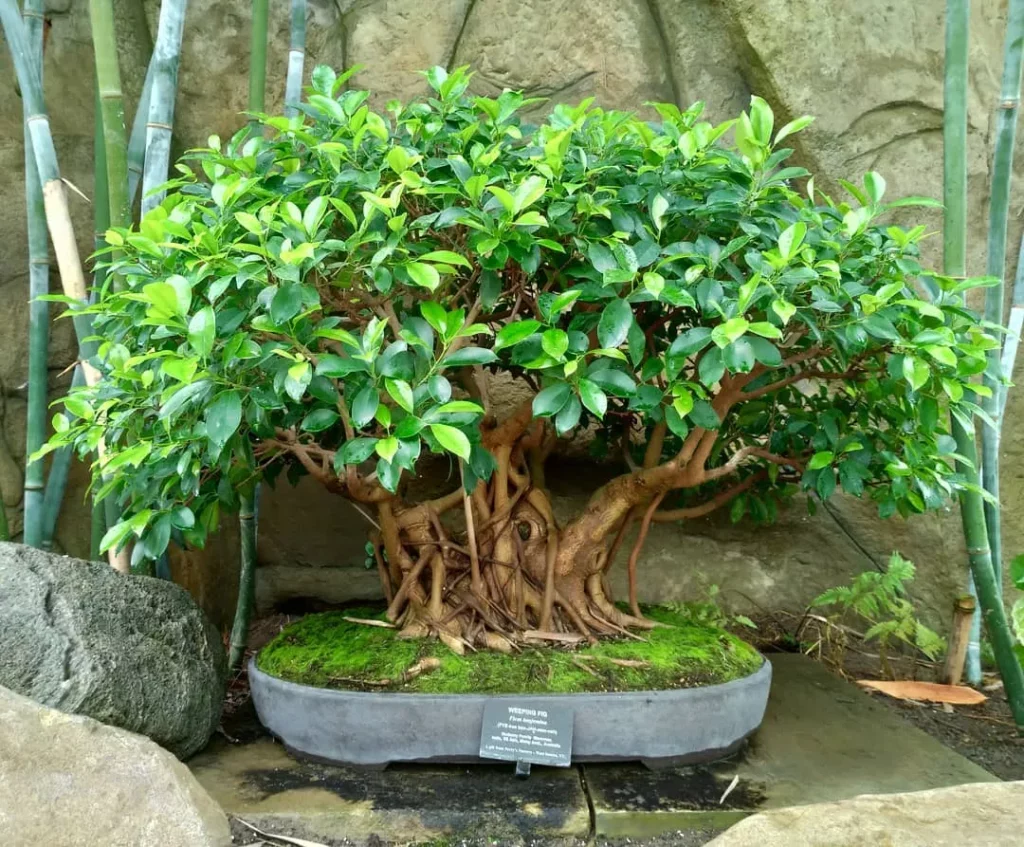
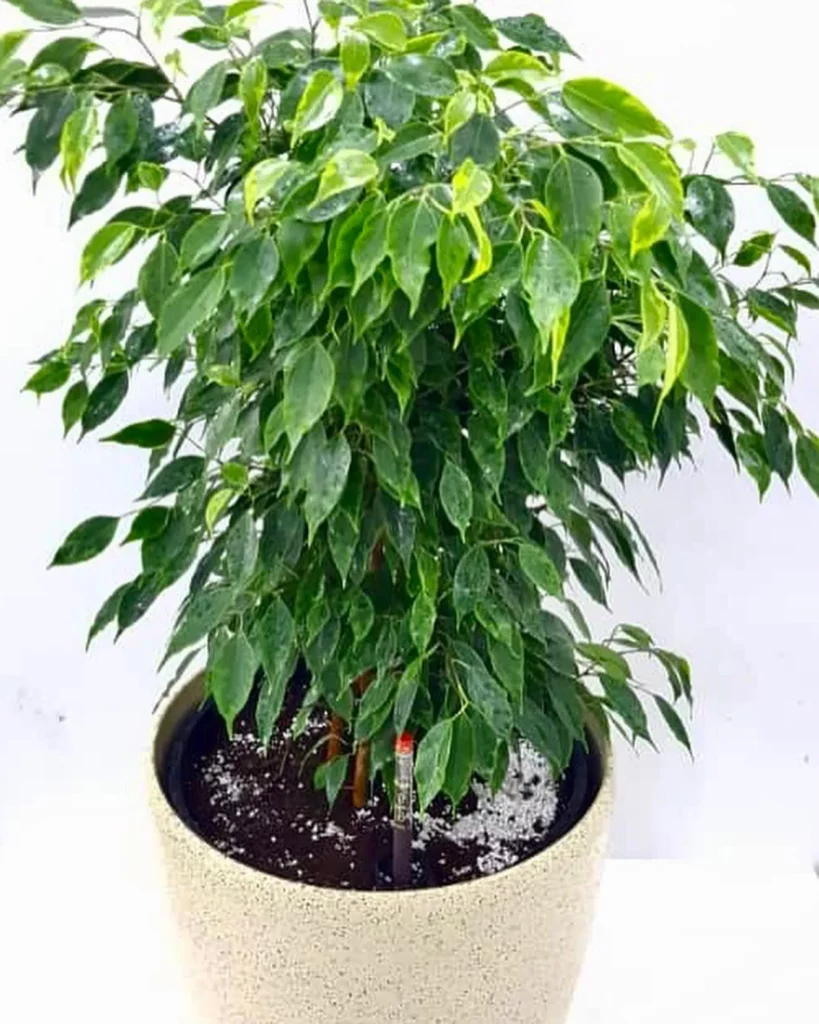

Wiring is a fundamental technique used to shape and refine the branches of bonsai trees. By carefully wrapping wire around the branches, bonsai enthusiasts can guide the growth and create the desired form of their trees. It is essential to choose the right wire thickness and material based on the branch’s size and flexibility.
For deciduous tree species, anodized aluminum wire is recommended as it is softer and easier to bend. On the other hand, annealed copper wire is preferred for conifers and pines due to its strength. The general rule of thumb when selecting wire is to use a thickness that is approximately one-third of the branch’s diameter.
It is crucial to apply the wire during the appropriate season. Late winter is an ideal time for wiring deciduous trees as they are dormant and less likely to be damaged. When wiring, it is essential to apply force to the inside of the curve with your thumbs while gently holding the outside of the branch with your fingers. This technique helps to achieve the desired shape without causing harm to the tree.
For thicker, older, or more brittle branches that are resistant to bending, a technique called guy-wiring can be employed. This method involves attaching a wire or cord to the pot or another part of the tree to gently pull the branches downwards, gradually shaping them over time.
In order to prevent damage, it is crucial to monitor the wired bonsai tree regularly. Wires should be removed before they start digging into the bark and causing harm to the tree. Careful attention and maintenance are key to ensuring the health and beauty of your bonsai tree.
Techniques for Bending and Shaping Branches

Bending and shaping branches is a key aspect of shaping bonsai trees, and it can be achieved through careful application of technique and skill. One common technique used in shaping bonsai trees is the application of wire. By gently wrapping wire around branches and trunk, we can guide their growth and create the desired shape. However, it is important to choose the right wire for the job. Anodized aluminum wire is suitable for deciduous trees, while annealed copper wire is best for conifers and pines. The wire should be approximately 1/3 the thickness of the branch it will be used on.
In addition to using wire, another technique for bending branches is through the use of guy-wires. This involves attaching a wire or cord to the pot or another part of the tree to gently pull the branches downwards. Guy-wiring is particularly useful for bending thick, old, or brittle branches that may be harder to shape with just wire alone. Care must be taken to apply proper tension to avoid damaging the branches or trunk.
No products found.
After wiring or using guy-wires to shape the branches, it is important to monitor the tree closely. Wires should be checked regularly to ensure they do not dig into the bark and cause damage. If the wire starts to cut into the branch, it should be removed promptly. This monitoring process ensures that the tree remains healthy and avoids any potential harm caused by the wiring process.
- Wire and guy-wires are two techniques used to bend and shape branches in bonsai trees.
- Anodized aluminum wire is suitable for deciduous trees, while annealed copper wire is best for conifers and pines.
- Wires should be approximately 1/3 the thickness of the branch they are being used on.
- Guy-wires provide additional support for bending thick, old, or brittle branches.
- Regular monitoring is essential to prevent wire damage to the tree.
| Wire Type | Suitable for |
|---|---|
| Anodized Aluminum | Deciduous trees |
| Annealed Copper | Conifers and pines |
Monitoring and Preventing Damage from Wiring
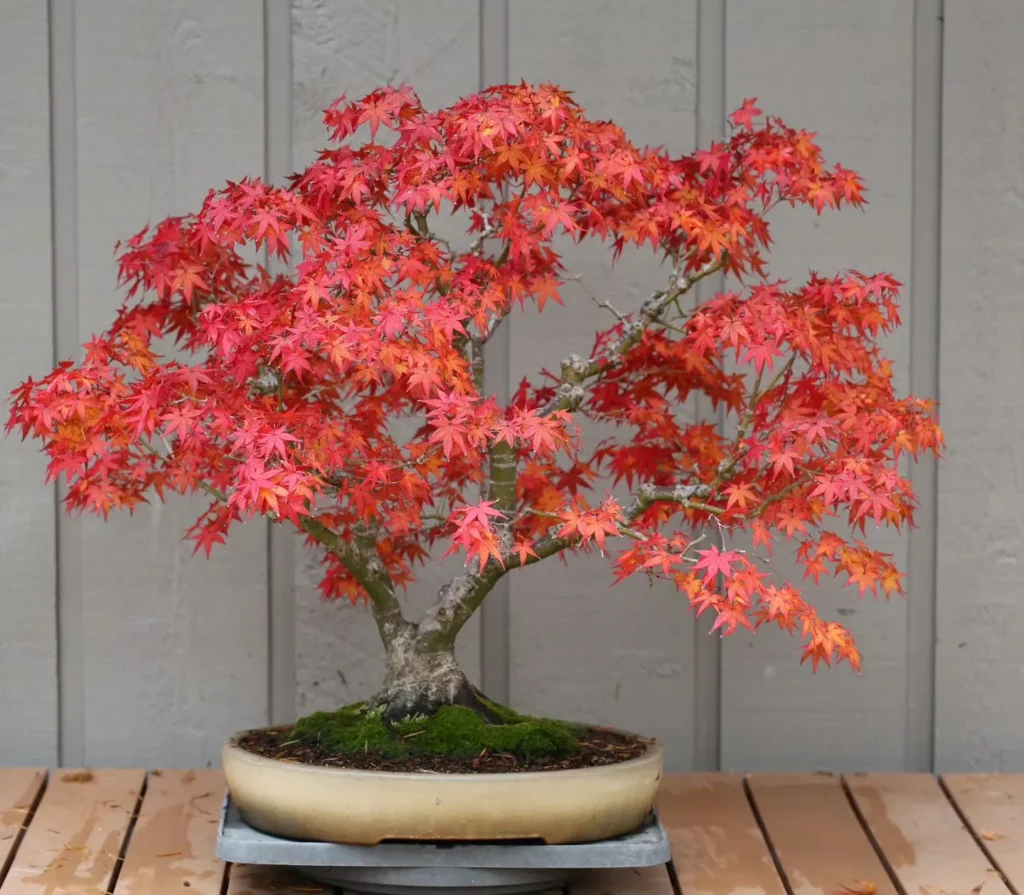
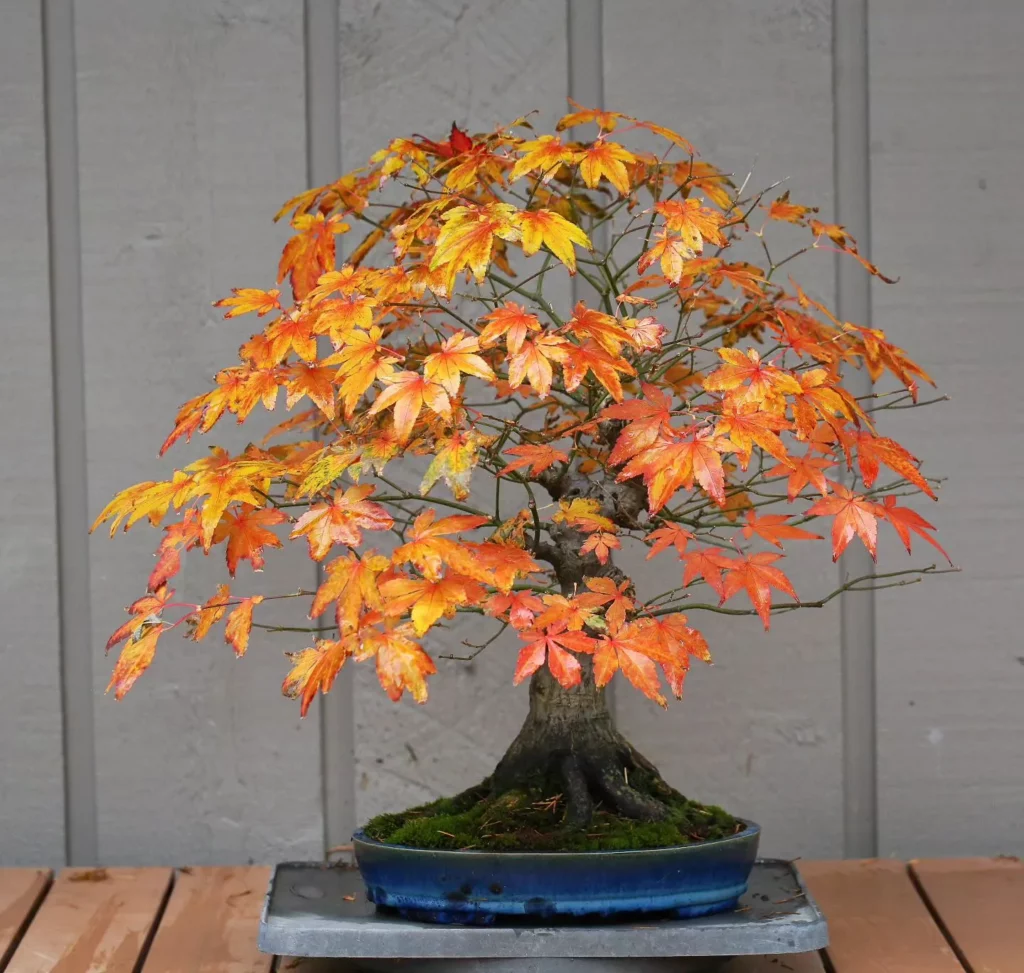
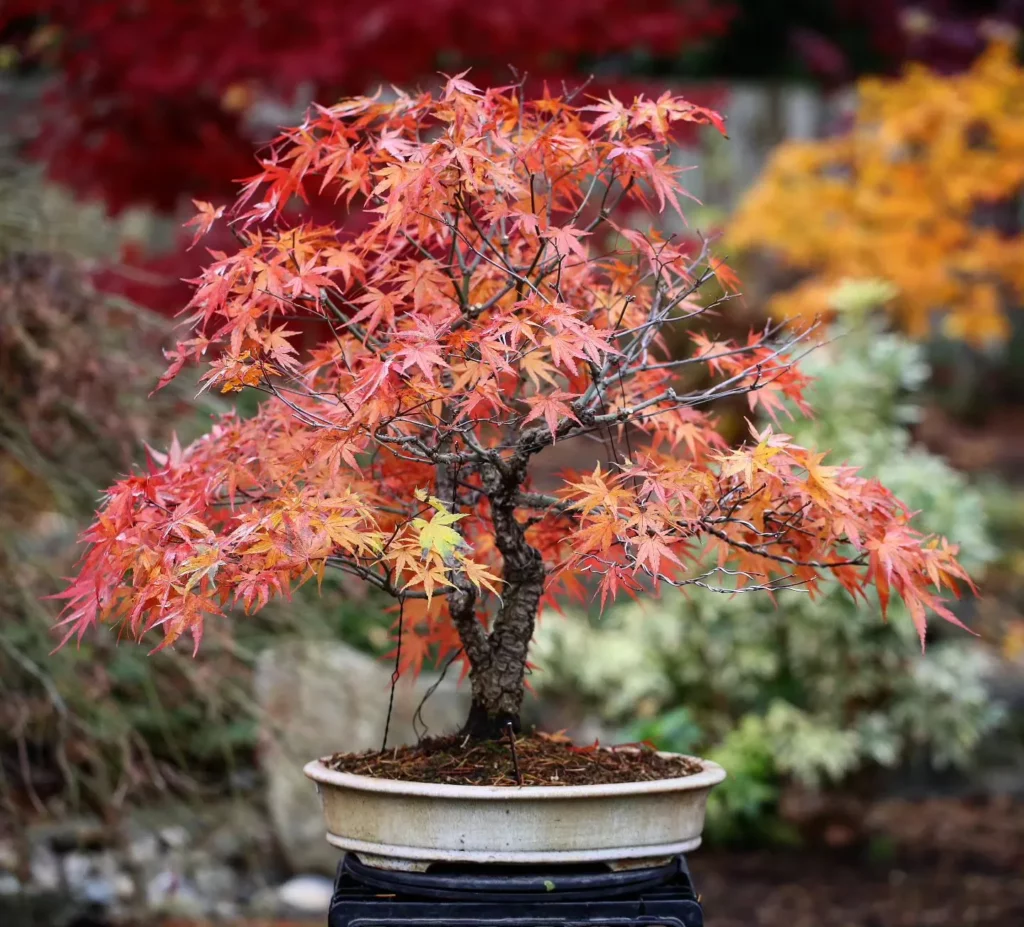
Proper monitoring and care are crucial to prevent potential damage caused by wires used in shaping bonsai trees. While wiring is an effective technique for bending and directing branches, it is important to regularly check the wires to avoid them digging into the bark and causing harm to the tree. By monitoring and taking timely action, you can ensure that your bonsai tree remains healthy and free from wire-related injuries.
One key aspect of monitoring is to regularly inspect the wired branches. Look for any signs of wires cutting into the bark or branches. If you notice wires starting to dig in, it is important to remove them immediately to prevent further damage. Gently unwind the wire while being careful not to disturb the surrounding foliage or branches.
“The health and well-being of your bonsai tree should always be a priority. Regular monitoring and quick action can prevent irreversible damage caused by wires.”
In addition to checking for wire damage, it is essential to monitor the overall health of your bonsai tree. Pay attention to any signs of stress, such as wilting leaves or discoloration. This could indicate that the wiring or pruning techniques used have caused strain on the tree. Adjustments may need to be made to relieve the stress and allow the tree to recover.
- Proper monitoring is essential to prevent damage caused by wires used in shaping bonsai trees.
- Regularly inspect wired branches for signs of wires cutting into the bark or branches.
- Remove any wires that are digging into the tree to prevent further damage.
- Monitor the overall health of your bonsai tree and make adjustments if needed to relieve any stress caused by wiring techniques.
- The health and well-being of your bonsai tree should always be a priority.
Exploring Alternative Shaping Methods
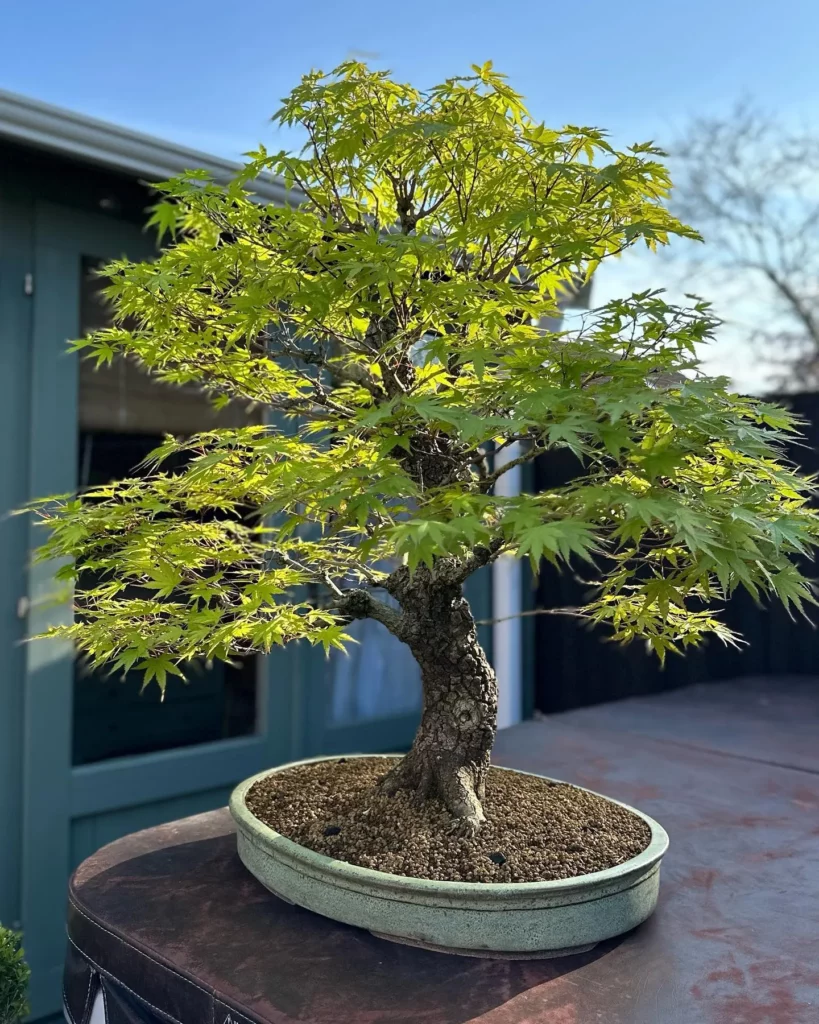
Aside from pruning and wiring, there are alternative methods available to shape and style bonsai trees. These techniques provide bonsai enthusiasts with additional options to express their creativity and achieve unique results. Let’s explore some of these alternative shaping methods:
1. Holding the Tree in Desired Shapes
One method involves gently manipulating the branches and trunk of the bonsai tree into the desired shape using your hands. This technique requires patience and careful observation of the tree’s response to the applied pressure. By gently bending and twisting the branches or trunk over time, you can create a natural and organic shape.
2. Guy Wires to Move Branches or Trunks
If you have thick, old, or brittle branches that are difficult to bend using other methods, guy-wires can be a helpful solution. This technique involves attaching a wire or cord to the pot or another part of the tree to gently pull the branches downwards. Over time, the branch will bend and take on the desired shape.
3. Traditional Spiral Wiring
Another commonly used method is the traditional spiral wiring technique. This technique involves wrapping a wire around the branch in a spiral pattern, allowing you to shape and direct its growth. Copper and aluminum are the two preferred wire materials used for this technique. Copper wire is generally stronger, providing more support for heavy branches, while aluminum wire is softer and easier to bend, making it suitable for more flexible branches.
As a bonsai enthusiast, you have a range of techniques at your disposal to shape and style your bonsai tree. Aside from the traditional pruning and wiring methods, exploring alternative shaping methods allows you to unleash your creativity and create stunning bonsai masterpieces. Whether you choose to hold the tree in desired shapes, use guy-wires for bending branches, or employ the traditional spiral wiring technique, each method offers its own unique challenges and rewards. Remember to be patient and attentive to your bonsai tree’s response, and with practice, you’ll be able to create beautiful and harmonious compositions that reflect your personal style.
Choosing the Right Wire for Bonsai Trees
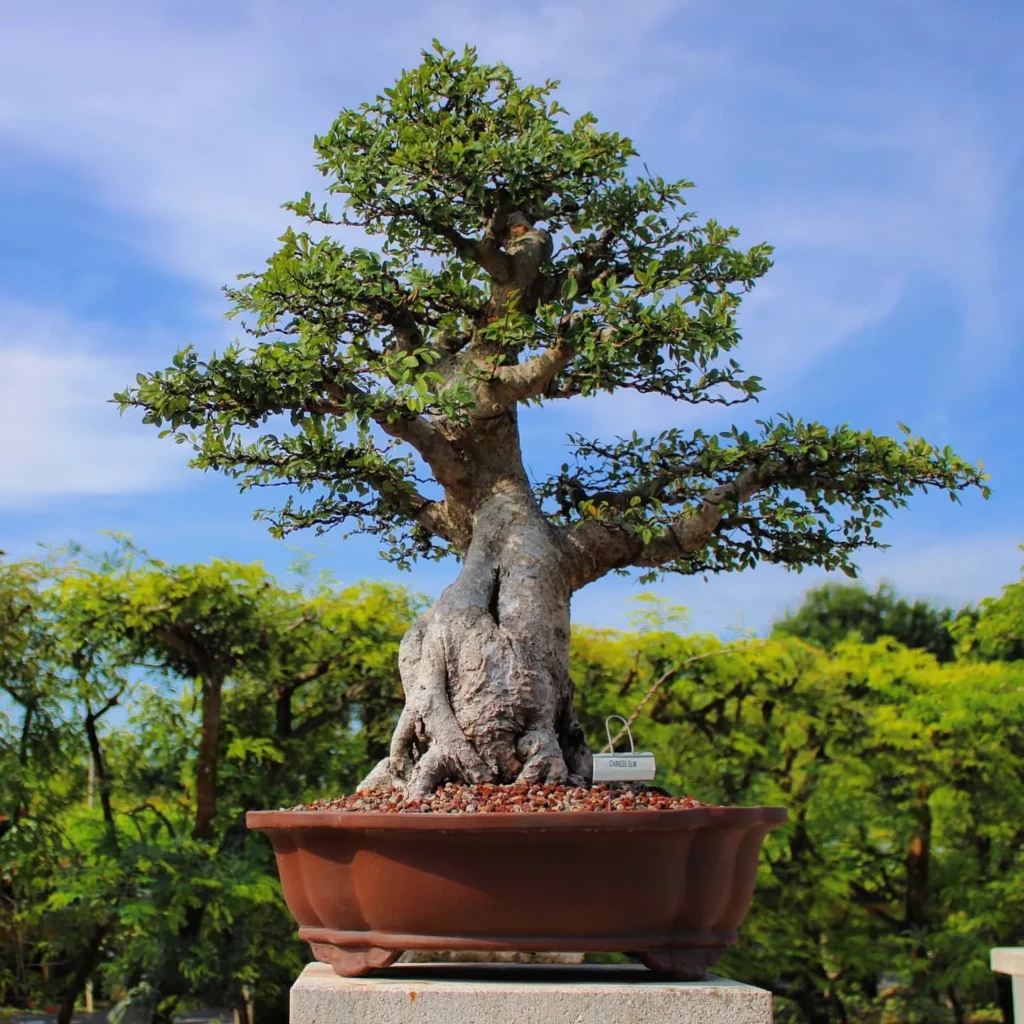


Selecting the appropriate wire is crucial for successful wiring and shaping of bonsai trees. The type of wire you choose will depend on the species and thickness of the branches you are working with. When it comes to wiring deciduous trees, anodized aluminum wire is commonly used. It is lightweight, easy to bend, and does not cause damage to the tree. For conifers and pines, annealed copper wire is preferred. Copper wire is stronger and provides better support for these thicker branches.
When choosing the right wire for your bonsai tree, it is important to consider the thickness of the branch. As a general rule of thumb, the wire should be approximately 1/3 of the thickness of the branch. This ensures that the wire will provide enough support without causing any damage or constriction.
Double-wiring and single-wiring are two common techniques used in bonsai tree shaping. Double-wiring involves using two wires for branches of similar thickness, providing better support and stability. Single-wiring, on the other hand, is used for branches that do not require as much support.
| Wire Type | Recommended for |
|---|---|
| Anodized Aluminum | Deciduous Trees |
| Annealed Copper | Conifers and Pines |
When bending branches with wire, it is important to apply force on the inside of the curve with your thumbs while holding the outside of the branch with your fingers. This technique helps achieve the desired shape without causing any damage to the branch. For thick, old, or brittle branches, guy-wiring can be used. This technique involves attaching a wire or cord to the pot or another part of the tree to pull the branches downwards.
“One of the most important aspects of wiring bonsai trees is to monitor the tree after wiring to prevent damage. The wires should be removed before they start digging into the bark and causing injury to the tree.”
Pruning is another essential technique for shaping bonsai trees. Maintenance-pruning is used to maintain and refine the existing shape of the tree, while structural-pruning is more rigorous and gives the tree its basic shape or style. By cutting at a bud or shoot, pruning can direct the growth of the tree in the desired direction.
Other methods for shaping bonsai trees include holding them in desired shapes and using guy wires to move branches or trunks. Traditional spiral wiring is also commonly used in bonsai cultivation. Copper wire is generally stronger and provides better support, while aluminum wire is softer and easier to bend. It is important to choose the right wire and apply it in the appropriate season, with late winter being recommended for wiring deciduous trees.
Seasonal Considerations for Wiring Bonsai Trees
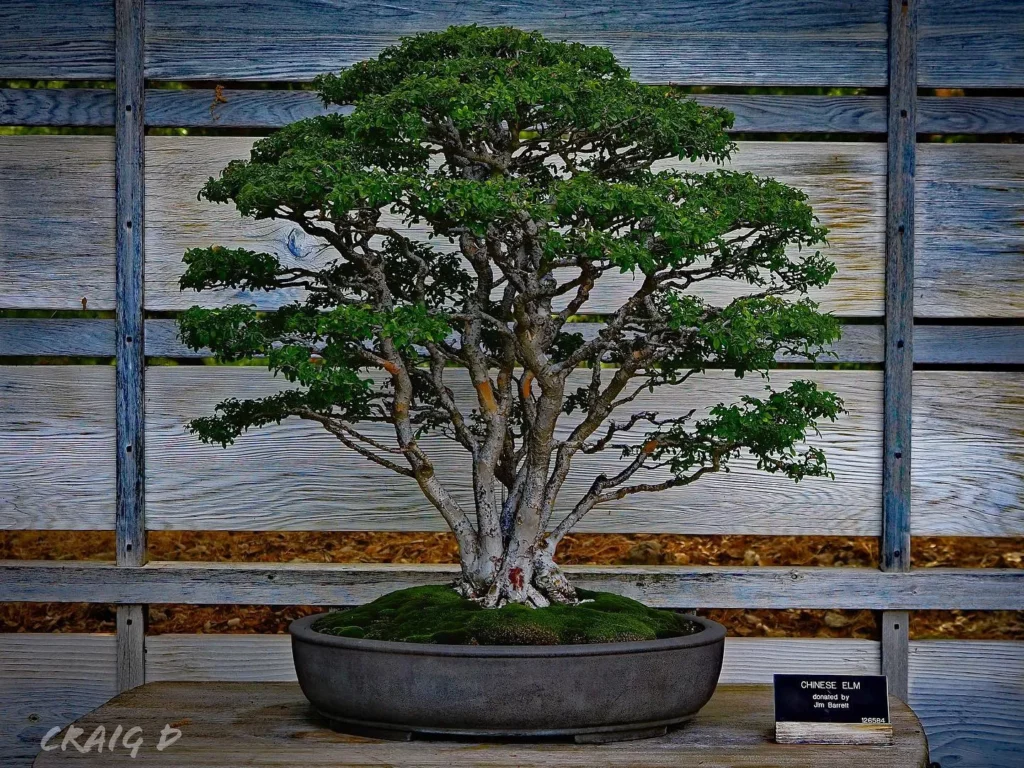
Timing your wiring activities in line with the tree’s growth cycle is essential for successful shaping and growth of bonsai trees. The proper season for wiring bonsai trees can vary depending on the species, but late winter is generally recommended for deciduous trees. This is because these trees are dormant during this time, allowing for easier manipulation without causing harm to the branches.
When it comes to wiring, choosing the right material is crucial. Anodized aluminum wire is commonly used for deciduous species, while annealed copper wire is preferred for conifers and pines. The wire you select should be based on the thickness of the branch you are working with. As a general rule, the wire should be approximately one-third of the branch’s thickness.
In terms of technique, there are two main wiring methods: single-wiring and double-wiring. Single-wiring involves using one wire to shape each branch, while double-wiring provides additional support for branches of similar thickness. To bend the branches, use your thumbs to apply gentle pressure on the inside of the curve, while holding the outside of the branch with your fingers.
It is important to monitor your wired bonsai tree regularly to prevent damage. Wires should be removed before they start digging into the bark and causing harm to the tree. Pruning is also a vital aspect of shaping bonsai trees. Maintenance-pruning is used to refine the existing shape, while structural-pruning is more involved and determines the tree’s basic style. By cutting at the bud or shoot in the desired direction, pruning can direct the growth of the tree.
FAQ
Q: What is the purpose of pruning and wiring bonsai trees?
A: Pruning and wiring are essential techniques in shaping bonsai trees. Pruning directs growth and helps maintain the desired shape, while wiring allows for bending and positioning branches to create the desired aesthetic.
Q: When is the best time to apply wire to bonsai trees?
A: The timing for applying wire varies depending on the tree species. For deciduous trees, late winter is the ideal time for wiring. It is important to consider the tree’s growth cycles and prune before new growth begins.
Q: What types of wire are used for bonsai trees?
A: Anodized aluminum wire is commonly used for deciduous species, while annealed copper wire is preferred for conifers and pines. The choice of wire depends on the thickness of the branch and the desired level of support.
Q: How do I choose the right wire thickness for my bonsai tree?
A: As a general rule, select a wire that is approximately 1/3 of the thickness of the branch you are working with. This ensures the wire provides enough support without damaging the branch.
Q: What is double-wiring and when should I use it?
A: Double-wiring is a technique used to provide additional support for branches of similar thickness. It involves using two wires wrapped around the branch in opposite directions. Double-wiring is beneficial when there is a need for extra stability.
Q: How do I bend branches using wiring?
A: To bend branches, apply gentle force on the inside of the curve with your thumbs while holding the outside of the branch with your fingers. This technique allows for a gradual and controlled bend without causing damage to the branch.
Q: Can I use wiring for thick, old, or brittle branches?
A: Yes, you can use guy-wiring for thick, old, or brittle branches. This technique involves attaching a wire or cord to the pot or another part of the tree to gently pull the branches downwards. Guy-wiring provides support and helps shape branches that are harder to bend with traditional wiring.
Q: How should I monitor wired bonsai trees to prevent damage?
A: It is crucial to regularly check wired bonsai trees to avoid wire digging into the bark. Wires should be removed before they start causing damage or constriction. Careful monitoring ensures the tree remains healthy and unharmed.
Q: What are the different pruning techniques for bonsai trees?
A: There are two main pruning techniques: maintenance-pruning and structural-pruning. Maintenance-pruning is used to maintain and refine the existing shape, while structural-pruning is more rigorous and gives the tree its basic shape or style.
Q: How does pruning direct growth in bonsai trees?
A: When pruning, cutting at a bud or shoot in the desired direction redirects the growth of the bonsai tree. By selectively removing branches or foliage, you can shape the tree and encourage growth in specific areas.
Q: Are there other methods for shaping bonsai trees?
A: Yes, holding bonsai trees in desired shapes and using guy wires to move branches or trunks are alternative shaping methods. These techniques can be used in combination with pruning and wiring to achieve the desired aesthetics.
Q: Which wire material is stronger, copper or aluminum?
A: Copper wire is generally stronger than aluminum wire. However, aluminum wire is softer and easier to bend. The choice between the two depends on the specific needs of the branches and the desired outcome.
Q: When is the right season for wiring bonsai trees?
A: Late winter is generally recommended for wiring deciduous trees. It is important to time the wiring process with the tree’s growth cycles to minimize stress and allow for proper healing before new growth begins.








